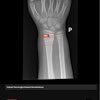A new PET tracer called RO-948 could become the standard method for diagnosing Alzheimer's disease, accurately differentiating the condition from other neurodegenerative diseases, according to a study published on 11 May in JAMA Neurology.
Swedish and Dutch researchers observed greater uptake and retention of RO-948 in brain regions associated with Alzheimer's, compared with the PET tracer flortaucipir. RO-948 also performed better than MRI and cerebrospinal fluid (CSF) biomarkers in distinguishing patients with Alzheimer's disease from individuals with non-Alzheimer's afflictions, those with mild cognitive impairment, and cognitively normal people.
"These findings suggest that RO-948 has a high specificity for Alzheimer disease-type tau and highlight its potential as a diagnostic marker in the workup of patients treated in memory clinics," wrote the authors, led by Antoine Leuzy, PhD, from Lund University in Malmö, Sweden.
A few studies assessing RO-948's efficacy in patients with dementia- and Alzheimer's-related conditions already exist. Dr. Dean Wong, PhD, and colleagues reported in a December 2018 study that the novel PET tracer improved the detection of tau protein tangles in the brain and had "much less off-target binding than was reported for existing tau tracers." More recently, an April 2020 study led by Nicola Spotorno, PhD, discovered a significant correlation between tau protein deposits observed on RO-948-PET and excessive iron accumulation from 3-tesla quantitative susceptibility mapping on MRI in key brain regions associated with Alzheimer's.
However, Leuzy and colleagues contended that there "have been no head-to-head comparisons" involving RO-948, MRI, CSF, and other PET tracers, such as flortaucipir (Avid Radiopharmaceuticals), which also has shown it can distinguish between Alzheimer's and other neurodegenerative diseases by measuring tau deposition.
To fill this void, the researchers prospectively enrolled 613 consecutive participants from the Swedish BioFINDER-2 study between September 2017 and August 2019. The cohort included 257 cognitively normal subjects (mean age, 65.8 ± 12.1 years); 154 patients with mild cognitive impairment (mean age, 70.8 ± 8.3 years); 100 Alzheimer's patients (mean age, 73.5 ± 6.7 years); and 102 people with non-Alzheimer's neurodegenerative disorders (mean age, 70.5 ± 8.6 years).
Subjects underwent both RO-948 and flortaucipir PET scans (Discovery, GE Healthcare) to determine tau deposition, along with MRI to measure hippocampal volume, composite temporal lobe cortical thickness, and whole-brain cortical thickness, as well as CSF measures to assess beta-amyloid and tau levels.
In reviewing the results, RO-948 retention was greatest in patients with Alzheimer's dementia, compared with all other subject groups. Based on an area under the curve (AUC) of 0.97 and heightened uptake in certain regions of interest in the brain, RO-948 was most proficient at correctly distinguishing between Alzheimer's patients and non-Alzheimer's subjects, with a sensitivity of 92% and specificity of 91%.
RO-948 standardized uptake value ratios (SUVRs) also were higher in patients with Alzheimer's dementia, compared with cognitively normal subjects and patients with other neurodegenerative disorders. The PET tracer also outperformed both cerebrospinal fluid measures and MRI using whole-brain thickness and temporal lobe thickness as biomarkers in the same group-to-group comparisons.
"Observed elevated levels of RO-948 SUVRs were most often seen among [beta-amyloid]-positive cases, which suggests that RO-948 has high specificity for Alzheimer's-type tau and highlights its potential as a diagnostic marker in the differential diagnosis of Alzheimer's," Leuzy and colleagues concluded.



















